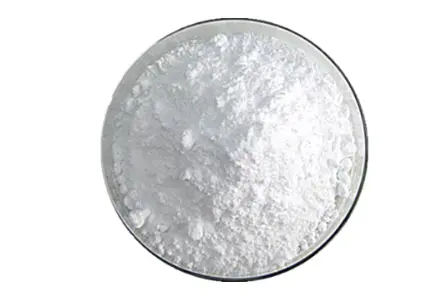D-Alpha Tocopheryl Succinic Acid vs. Vitamin E
1. About D-Alpha Tocopheryl Succinic Acid and Vitamin E
Vitamin E is a collective term for eight fat-soluble compounds: four tocopherols (alpha, beta, gamma, delta) and four tocotrienols. Among these, D-alpha-tocopherol is the most biologically active form in humans. Natural vitamin E (designated as "D" isomers) is sourced from plants like sunflower oil, while synthetic versions ("DL" isomers) are chemically derived and less potent.
D-α-TSA is a semi-synthetic derivative where succinic acid is esterified to D-alpha-tocopherol. This modification enhances molecular stability, making it resistant to oxidation and suitable for high-temperature processing. Unlike unesterified vitamin E, D-α-TSA is hydrolyzed in the intestine to release free tocopherol, ensuring gradual absorption.
Key Differences:
| Property | Vitamin E (D-alpha-tocopherol) | D-Alpha Tocopheryl Succinic Acid |
|---|---|---|
| Form | Alcohol | Succinate ester |
| Stability | Oxidizes rapidly | Heat- and oxidation-resistant |
| Bioavailability | Immediate absorption | Delayed release via hydrolysis |
| Applications | Dietary supplements, oils | Pharmaceuticals, fortified foods |
2. Bioavailability and Metabolic Pathways
Vitamin E Absorption Dynamics
Natural vitamin E is absorbed with dietary fats via micelles in the small intestine. Its bioavailability depends on:
-
Presence of pancreatic enzymes and bile acids.
-
Competition with other fat-soluble vitamins.
-
Individual metabolic efficiency (e.g., genetic variations in tocopherol transfer proteins).
However, unmodified tocopherols degrade quickly under UV light or high pH, limiting their efficacy in processed foods or topical formulations.
Advantages of D-α-TSA’s Esterification
The succinic acid group in D-α-TSA serves two purposes:
-
Protection: Shields the tocopherol from oxidative degradation during manufacturing.
-
Targeted Delivery: Requires enzymatic hydrolysis in the gut, ensuring gradual release and reducing renal excretion.
Studies show esterified vitamin E achieves 30–50% higher plasma concentrations than non-esterified forms due to efficient lymphatic absorption (Traber et al., 2021). This makes D-α-TSA ideal for:
-
Nutraceuticals: Sustained antioxidant support.
-
Topical Creams: Enhanced skin penetration without irritation.
-
Animal Feed: Stable under pelleting temperatures.
3. Distinction of application
Vitamin E in Nutrition and Skincare
Natural vitamin E (D-alpha-tocopherol) is preferred for:
-
Dietary Supplements: Capsules, softgels.
-
Cosmetic Oils: Serums, anti-aging creams.
-
Food Fortification: Vegetable oils, cereals.
Its rapid absorption benefits users seeking immediate antioxidant effects, such as reducing UV-induced skin damage or combating lipid peroxidation.
D-α-TSA’s Niche in Pharmaceuticals and Specialty Products
The esterified form excels in scenarios demanding stability and precision:
-
Tablet Coatings: Protects active ingredients from oxidation.
-
Injectable Formulations: Neutral pH compatibility.
-
Fortified Beverages: Stable in aqueous solutions.
For example, D-α-TSA is used in chemotherapy adjuvants to mitigate oxidative stress without interfering with drug efficacy (Jiang et al., 2019). Its GRAS (Generally Recognized As Safe) status further supports use in FDA-regulated products.
Premium D-Alpha Tocopheryl Succinic Acid Supplier
As a leading manufacturer of vitamin E derivatives, Xi'an Sost Biotech specializes in high-purity D-α-TSA tailored to industrial needs. Our facilities adhere to ISO 9001 and NSF standards, Whether developing functional foods, topical therapeutics, or animal nutrition solutions, our team provides technical guidance from formulation to regulatory compliance.
Contact Us at [ericyang@xasost.com] for samples, pricing, or partnership inquiries.
References
-
Traber, M. G., & Head, B. (2021). Vitamin E: Regulatory Role on Mitochondrial Function. Annual Review of Nutrition.
-
Jiang, Q., et al. (2019). γ-Tocopherol, but Not α-Tocopherol, Decreases Proinflammatory Eicosanoids and Inflammation Damage in Rats. FASEB Journal.
-
National Institutes of Health (NIH). (2023). Vitamin E Fact Sheet for Health Professionals.

 Food Additives
Food Additives











